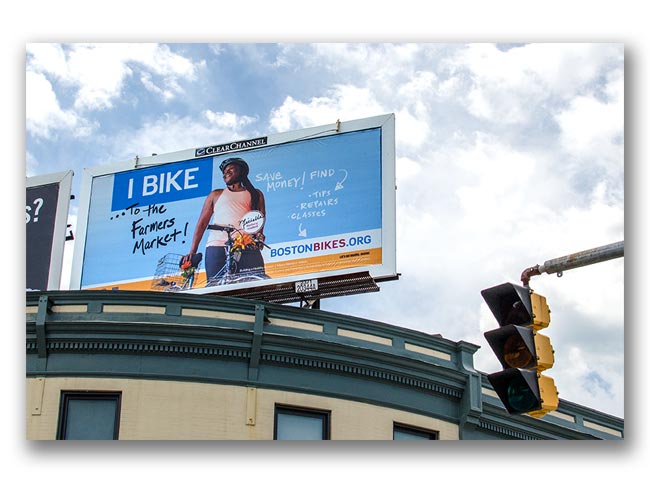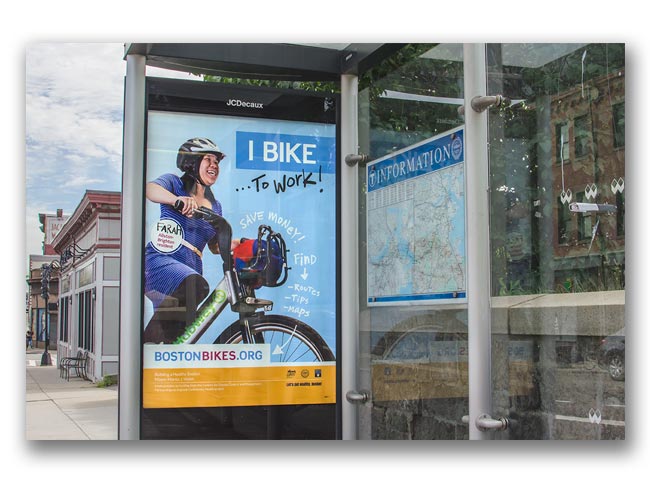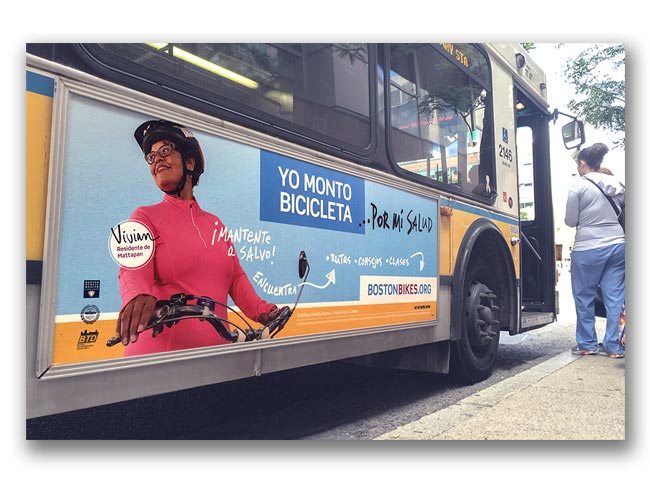Let’s Get Healthy, Boston’s “I bike” campaign

Boston Public Health Commission
The Health Communication Core worked with Boston Public Health Commission leadership to develop a city-wide multi-media campaign to increase bicycling among Boston’s residents, especially in neighborhoods that are most at risk for health disparities.
The campaign strategy was developed in response to input from neighborhood Healthy Community Champions and other residents who participated in focus groups. The strategy guided development of the campaign’s materials, including billboards, transit displays, posters, flyers, and collateral.

The campaign targeted Boston residents of all ages who know how to ride a bike. It was designed to especially address the barriers and enhance the motivations experienced by people of color, low-SES groups, and new residents in LGHB’s targeted communities:
- Barriers to bicycling identified in focus groups:
- Cost (obtaining and repairing a bike, equipment)
- Safety (traffic, violence, lack of biking infrastructure, lack of knowledge about safety)
- Access (no Hubway, or no credit card to use Hubway)
- Logistics (storage, theft, helmets, lights)
- Perception (biking is for people who are young, primarily white and/or male, people with high SES, tourists, hipsters)
Motivations identified by Boston residents who bike:
- Saving money
- Saving time
- Health
- Recreational (fun and social)

Campaign graphics and taglines communicated the following key messages:
- Your neighbors and peers--people like you--bike in Boston.
- There are many reasons to bike and many benefits to biking.
- You can bicycle to diverse destinations, both practical and for pleasure.
- Choose to bike.
- Resources are available to help make biking an affordable, safe, healthy, enjoyable choice for you.
The theme of the campaign, “I Bike,” communicated to the audience that people to whom we can easily relate--our neighbors and peers--choose to bike.
Portraits of residents who incorporate biking into their regular routines showed “real people” with their bikes, affirming that bicycling is not just for people with specialized (and costly) biking attire and equipment. These role models directly addressed misconceptions about the kinds of people who bike and the reasons people might choose to bike.
Residents chosen as models in the campaign represented diversity in terms of age, gender, race/ethnicity, language, and neighborhood. Their name and neighborhood (for example, “Vivian, Mattapan”) was displayed directly below the “I Bike” banner to increase their relevance as role models for the audience.
